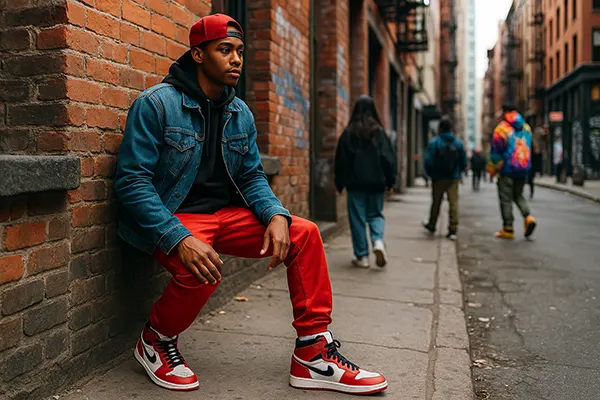
Air Jordan in Street Fashion: How Michael Jordan’s Sneakers Became a Style Icon
The rise of Air Jordan sneakers from sportswear to a global fashion statement reflects a powerful crossover between athletic performance and cultural expression. Since their debut in 1985, Air Jordans have redefined not just how people dress, but how they connect with identity, rebellion, and style. Their presence in music videos, skate parks, and fashion runways has made them a symbol of individuality and aspiration for generations.
The Cultural Impact of Air Jordans Over the Decades
Over the past 40 years, Air Jordans have shaped much more than the basketball court. Their design innovations, inspired by Michael Jordan’s on-court legacy, quickly caught the attention of hip-hop artists and youth communities across the United States and later the world. Early endorsement by rappers like LL Cool J and Run-DMC helped the sneakers step outside of sports and into everyday culture.
In the 1990s, as urban fashion took root in popular consciousness, Air Jordans became a uniform for street culture. They were seen as markers of taste and confidence, often paired with oversized jeans, jerseys, and gold chains. This era solidified their role as a cornerstone in urban aesthetics.
By the 2000s, Jordans had achieved global fame. International artists, athletes, and fashion icons adopted them, and the shoes evolved into luxury items. Today, Air Jordans serve as both historical relics and contemporary status symbols, with new releases instantly becoming collectable items.
How Sneaker Culture Turned Jordans into a Lifestyle
The growth of “sneakerhead” culture brought a new layer of significance to Air Jordans. Limited releases, exclusive drops, and collaborations with designers like Virgil Abloh or Travis Scott turned these shoes into must-have fashion pieces. Sneakerheads track release calendars, participate in raffles, and even camp outside stores just to obtain a pair.
Online marketplaces like StockX and GOAT have created a secondary economy where certain Air Jordan models are resold for thousands of pounds. This resale culture is not just about profit, but about status, rarity, and community recognition. Owning rare Jordans is akin to owning a piece of cultural history.
The obsession with collecting Air Jordans has also turned them into conversation starters. On the street, at parties, or on social media, people connect through shared admiration of their designs and history. This sense of belonging adds emotional value to each pair, far beyond their function as footwear.
Air Jordans and the Evolution of Streetwear
Streetwear, as a fashion movement, emerged alongside the popularity of Air Jordans. The brand’s unique mix of high-performance technology and artistic design aligned perfectly with the ethos of streetwear—authentic, bold, and grassroots. This alignment made Jordans an integral part of streetwear’s visual language.
Throughout the 2010s, Jordans appeared in collaborations with Supreme, Off-White, and Dior, blurring the lines between athletic wear and high fashion. These limited collections pushed Jordans into the spotlight at Paris Fashion Week, transforming them into luxury collectibles featured by fashion editors and stylists worldwide.
Influencers and celebrities like Kanye West, Rihanna, and Drake have all championed Jordans, helping solidify their place in the fashion hierarchy. The sneakers became not just part of the outfit, but the focal point of entire looks, celebrated for their style, colourways, and design storytelling.
Why Air Jordans Resonate with Fashion-Conscious Youth
For many young people, Air Jordans symbolise empowerment. Wearing a pair connects them with cultural legacy, athletic greatness, and a community of like-minded enthusiasts. They represent rebellion, creativity, and ambition—values deeply embedded in youth identity.
Jordans also resonate because of their versatility. They can be styled with jeans, joggers, skirts, or suits, effortlessly blending with various aesthetics. This adaptability makes them ideal for youth expressing themselves through fashion in dynamic, evolving ways.
Moreover, Air Jordans serve as fashion entry points. For those starting their style journey, owning Jordans feels like stepping into a tradition. They are not just trendy—they’re rooted in stories and statements that make fashion meaningful.

The Global Expansion of the Jordan Aesthetic
While the brand was born in the United States, Air Jordans have become a global fashion staple. In cities like Tokyo, Paris, and London, Jordans are integral to urban youth style. Global subcultures, from grime in the UK to K-pop in South Korea, have adopted them as visual markers of authenticity and trendsetting.
Retail collaborations with international designers and artists have further broadened the appeal. Regional exclusives and themed releases cater to local tastes while maintaining the core Jordan ethos, making the brand feel both universal and personal at once.
Social media platforms like Instagram and TikTok have amplified this reach. Young fashion creators across the globe showcase their fits, builds, and collections, often centring their styles around Jordans. These platforms sustain and evolve the brand’s relevance by giving it new voices and visuals daily.
How Air Jordans Became Icons Beyond Sneakers
Air Jordans have transcended their identity as sportswear to become cultural icons. Their legacy is visible in art, music, film, and even social justice. They’ve been worn in protests, on runways, and in campaign photoshoots, each time standing for more than just style.
Their influence also extends to gender and identity. While historically seen as a male staple, Jordans have been embraced by women and non-binary individuals, challenging gendered norms in sneaker culture and expanding what the brand represents.
As of 2025, Air Jordans remain not only relevant but revolutionary. They continue to represent a blend of sport, style, and substance that few other fashion items have achieved. More than shoes—they are statements, worn loudly and proudly by people around the world.
